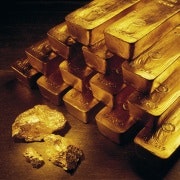THE ASHES: Australia's false promise
Lord's, London — Australia’s cricketers had begun to resume normal service after losing narrowly in Nottingham. Each morning at Lord’s they formed a huddle and one of them would tell a joke. The idea was to run on to the field with a smile of their faces, but it will be no fun for the player chosen to make his team mates laugh on Saturday morning.
On an easy wicket on another baking hot day in London, Australia contrived to get all out for 128, a total which, in the circumstances, is frankly pathetic. This was fewer than the lowest score they made in India (that was 131), which was assumed to be the nadir of Australian batsmanship.
The stars barely glimmered. Shane Watson was lbw reaching forward to a ball on his leg stump after looking peerless, scoring 30 off 42 balls before lunch. Normally he works on the principle that he cannot be given out when he takes a long step forward, and when Bresnan appealed he asked for a review, as he had done when he was given out lbw at Trent Bridge. There there was some consternation at what looked like an example of unbridled selfishness. But Watson was not guilty. At the close Darren Lehmann revealed that his partner, Chris Rogers suggested that he was not out. None the less, it was a review wasted.
Michael Clarke had used his bowlers imaginatively in England’s innings, but when a big innings was required, it did not come. He might be the most prolific batsman in the world but he looked unsettled at the crease, too conscious perhaps of the burden he has been carrying since the abrupt dismissal of Mickey Arthur. He was out lbw too, to a half volley on the leg stump which kept low. As an example to his colleagues, he was hapless.
The morning had looked bright for Australia, which began the day 2 to 1 favourites at the bookies. England’s tail thrashed around productively with the last pair of Stuart Broad and Graeme Swann contributing 48 more runs in their last wicket stand in only 44 balls. But the Australian dressing room must have thought that if the pitch was playing as easily as it looked, they ought to be able to do better than England’s 361.
They began what should have been a journey lasting well into the third day at 11.55am. By 5pm, after only 53.3 overs, they were back on the field again. England’s lead was 233, but they had not enforced the follow on. Whatever faint hope they retained however, was not completely extinguished by the end of the day. England lost wickets to penetrating bowling by Peter Siddle. Cook failed again, as did Pietersen, and Trott was out for a duck for the second Test in succession. England’s fearsome top three scored merely 30 (two more than they had managed in their first innings). Peter Siddle took them all — his three wickets cost only four runs and it suggests that Australia does not have a monopoly on vulnerable top-order batsmen in this Ashes series.
Ryan Harris had taken 5 for 72 in England’s innings, and when Australia batted Graeme Swann was able to hold up the ball to the crowd, celebrating his own five-for at a cost of 44 runs. Harris, who was Australia’s best bowler, has had to wait patiently for his success. He is 33 but has played only 13 Tests; he asks more of his body than it is able to give. Despite his haul, Swann was not the best of England’s bowlers but he was certainly the luckiest.
Soon after lunch he lost control of the flight of a slower ball. It was a high full toss that dipped in towards Chris Rogers who tried to hook and missed. The ball hit just below the waist line. Swann appealed and Umpire Erasmus gave him out lbw. Since Watson had used one review at his suggestion, Rogers decided it would be wrong of him to risk another. Pity, the ball would passed an inch or so outside the off stump. Phil Hughes did not hesitate however, when he was given out caught by Prior behind the wicket. He too was out of luck. The review found him guilty of a thin edge, and Australia had no reviews left.
Usman Khawaja, who had been preferred to Ed Cowan, edged a chance to first slip exactly as Cowan had done in the first Test, which Trott dropped, but Khawaja could not resist a slower ball from Swann which he hit high into the air off the bottom of the bat and was caught by Kevin Pietersen at mid on. It was the undistinguished stroke of a nervous batter. Steve Smith misread the bounce of a delivery from Swann and was neatly caught by Ian Bell at short leg.
Clarke went next with the score on 91 and scoring came to a virtual standstill, Australia proceeding to lose five wickets for 18 runs. The inexperienced Ashton Agar ran himself out when Brad Haddin ignored his call for a quick run. Siddle was Anderson’s only dismissal in the innings, Swann grabbed the last two wickets. The last pair, Harris and Siddle, had put on 24, the second highest stand of the innings.
Australia’s bowlers, who stubbornly tried to make up for the failings of its batsmen, were threatening to deceive at the end of a day in which no fewer than 16 wickets had fallen on an unthreatening pitch. Cook and Trott edged onto their stumps; Pietersen delivered a catch waist high to gully. But England lead by 263 with seven wickets standing. Australia are favourites no longer.
Stephen Fay is a former editor of Wisden and author of books about the Bank of England and the collapse of Barings.













